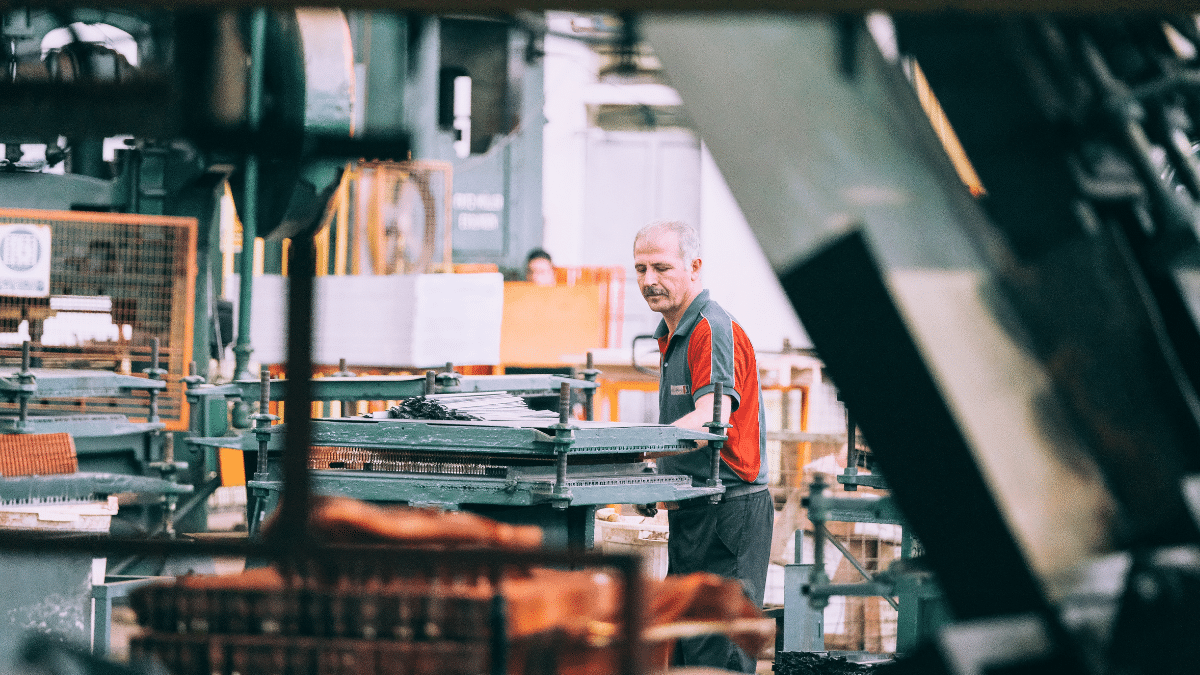
6 Challenges of Managing Accounting for Manufacturing
Compared to general accounting, managing the accounting side of a manufacturing business comes with the unique burden of monitoring and recording production costs associated with each product.
Don’t worry, you’re not alone in dealing with these issues. There are almost 600,000 manufacturing businesses in the U.S. in 2023 (IBISWorld). Every company is different, but some typical accounting hurdles for manufacturing are likely to impact most organizations.
Longer production timelines, navigating inventory management, and personnel constraints are just some of the difficulties your manufacturing company might be facing.
Here are six common accounting challenges in manufacturing.
1. Complicated accounting processes
Just as the timelines for the manufacturing industry are more complex, so too are the accounting processes.
Think about it: compared to other organizations that just require one inventory or might not have inventory at all, a manufacturing company has multiple inventories to manage across different stages of production. This includes raw materials, sub-assemblies, work in process, outside processing, and finished goods—potentially at different locations. Each inventory requires meticulous tracking and valuation to ensure accurate financial reporting.
Tracking inventory levels accurately can present inherent difficulties due to factors such as shipping delays, fluctuations in demand, and production delays, all of which were identified by Deloitte as major influencers on supply chains in 2022. These variables can significantly impact valuations and liquidity within the manufacturing industry.
Calculating production costs is not easy either. There are complicated calculations for tracking costs since businesses must consider direct materials, labor, and overhead expenses. There’s also the dilemma of deciding what should and shouldn’t be included from overhead. Allocating costs to various products and processes requires careful and sophisticated accounting skills to ensure accurate cost accounting practices.
2. Intensive working capital requirements
Manufacturing is inherently capital-intensive. It requires financial resources for raw materials, labor, and overhead costs.
This is why it’s crucial to strike the right balance between having just enough inventory on hand and not having too much sit unused. Ideally, you will avoid paying to sit on unsold inventory or store underutilized raw materials.
However, accounting for inventory and resource planning is no small task. This is why specialized accounting tools for manufacturers make a world of difference in managing the business.
It’s not a problem that fixes itself once you have the necessary things in place. Many accounting professionals haven’t worked in the manufacturing industry. It’s not just about having the right tools. It’s also about knowing how to use them well.
Since overproduction is so costly, experienced accounting for manufacturers is critical for success.
3. System limitations and fragmented data
It is pretty common to use multiple systems to run your manufacturing business, but it can be a challenge to make decisions unless your data is unified. Data may need to be ‘cleaned’ to eliminate redundancies or to make it easier to work with. Many organizations have different personnel maintain separate ‘sources of truth’, potentially leading to wasted time, conflicting data, or poor decisions.
You’re not the only one facing this kind of data fragmentation. This can make generating accurate reports extremely frustrating and more time-consuming than it should be.
4. Lengthy manufacturing timelines
Unlike other industries, managing timelines for manufacturing companies is not straightforward. There are so many steps along the way, from product ideation to completion and for some products, that can lead to long timelines.
Because of this complexity, the manufacturing industry requires vigilant accounting practices to maintain financial stability and optimize resources amidst prolonged production cycles. It isn’t as easy as cash in, cash out.
Sourcing raw materials means fluctuating prices and potential supplier delays. Then, product development and prototyping can range from weeks to months. Once you have a finalized sample, you might need to build an assembly line before getting into production. This timing is dependent on what you’re producing.
Within the production timeline, you’re also investing time in quality control, fine-tuning the product or process, labeling, and packaging.
Some common variables that can impact your timeline include how labor- and time-intensive the product is, the availability of raw materials, whether certain steps need to be outsourced, the efficiency of your manufacturing equipment and processes, and unexpected delays.
We all remember how the pandemic seriously impacted manufacturing timelines, with supply-chain disruptions, slowed production, and unprecedented delivery times on products like cars, furniture, and electronics.
Accurate accounting is like a guiding star that helps companies stay financially stable and use their resources wisely during complicated and uncertain production processes.
5. Time and personnel constraints
While it is important to ensure that your accounting is done properly, you also don’t want to fall into the trap of the wrong people spending too much time on these tasks.
For instance, in a mid-size or family-owned manufacturing company, owners are often very involved in every aspect of the business: from sales to product design to production to shipping and beyond. Adding accounting responsibilities to the C-suite’s plate can be too much to balance and hinder overall productivity.
Alternatively, some companies rely heavily on one in-house accounting expert to manage everything. While this takes work off of an owner’s plate, this overreliance on one individual means fragility.
After all, if and when that person suddenly leaves, the company’s accounting procedures may not be properly documented, and it’s often hard for someone new to pick up where they left off.
6. Balancing capital expenditures for equipment
Because a manufacturing company has so much more to account for when it comes to equipment, maintenance, and replacement, this can become a tricky financial juggling act.
Unlike other industries, manufacturing relies heavily on expensive, specialized equipment, which requires substantial investments. Balancing the need for efficient production while considering the budget can be daunting.
When do you decide to invest in a new piece of equipment, and how long to hang on to an older one that is slowly depreciating? Deferred maintenance can lead to increased downtime and costly repairs, while timely replacements demand strategic financial planning.
This is ultimately difficult to plan for if you don’t have the right tools and expertise to accurately compare various ‘what if’ scenarios using accurate, up-to-date information.
Ready to face these challenges?
Managing the accounting side of a manufacturing business is a complex and challenging task. Lengthy production timelines, complicated accounting processes, and intensive working capital requirements make financial planning and forecasting crucial for success.
The limitations in accounting systems, experienced personnel, and time constraints further add to the difficulties. Balancing capital expenditures for equipment requires strategic financial planning to optimize production efficiency and budgetary constraints.
Overcoming these common accounting challenges demands expert skills and constant vigilance to ensure financial stability and profitability in the dynamic manufacturing landscape.
Discover tips for profitable manufacturing financial management.



